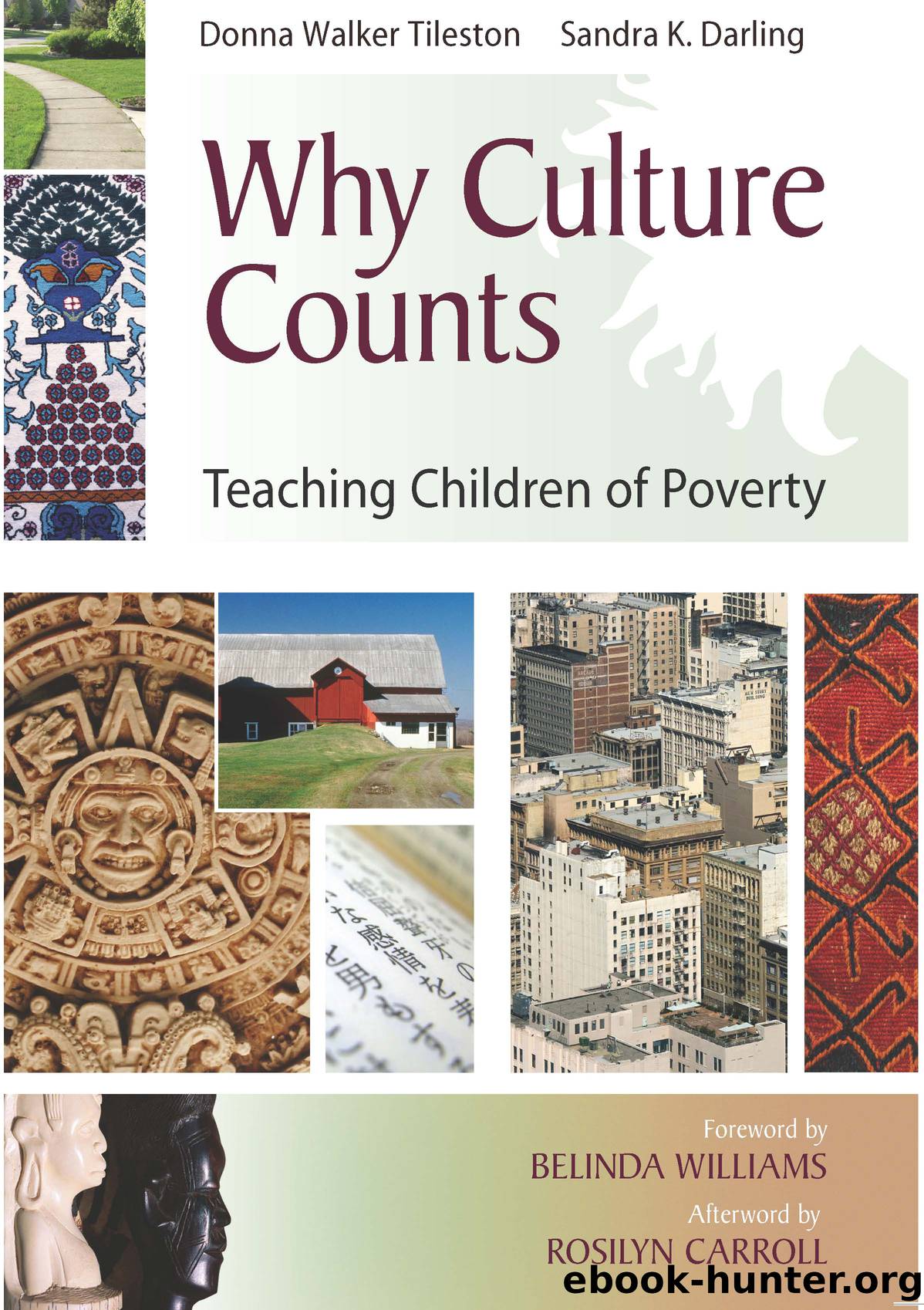Why Culture Counts by Walker-Tileston Donna;Darling Sandra; & Sandra K. Darling

Author:Walker-Tileston, Donna;Darling, Sandra; & Sandra K. Darling
Language: eng
Format: epub
Publisher: Solution Tree
Published: 2008-08-15T00:00:00+00:00
Figure 6-2: A sample KNLH chart
In the chart, the K stands for âknow.â Find out up front what your students think they know about immigration. Sometimes they will say before a new unit, âWe already know all about that; we had it last year.â This is a good opportunity to find out. Usually, you will find out that they do not know as much as they think they do; on the other hand, if they do already know quite a bit, adjust the pace of the lessons and go into in-depth learning. The K in our example means ask the students what they already know about immigration. Ask them to work in study groups of three and to answer this question by listing at least five things that they know.
At the bottom of the graphic organizer are categories 1, 2, 3, and so on. Ask the students to look back at the information that they listed and to put a 1 by anything that is related to politics. Next, ask them to put a 2 by anything related to medical issues. You will be discussing seven categories in the lessons of the unit. By giving students the categories at the beginning and applying them to what they already know, you are preparing their brains to make connections.
The N stands for âneed to know.â (There was a time when we would say, âWhat do you want to know in this unit?â We do not want to give students the chance to respond with âNothing,â so we now say âneed to know.â) This list comprises your studentsâ personal goals. Children of poverty often do not make goals or plan for the future, and especially if they are surrounded by violence, they may believe that they have only today to think about. This exercise begins to teach them to set personal goals. After the unit is complete, revisit what they said they already knew and what they needed to know to determine if they have met their goals. Ask them to make a list of what they have learned and how they learned it. It is also important for children of poverty to understand how they are learning so that they see that it is their own efforts, their own processing that have led to the learning. We are trying to change their perception of locus of control, so that they come to realize it is not bad luck or good luck but their own efforts that lead to the learning.
Download
This site does not store any files on its server. We only index and link to content provided by other sites. Please contact the content providers to delete copyright contents if any and email us, we'll remove relevant links or contents immediately.
The Art of Coaching Workbook by Elena Aguilar(50168)
Trainspotting by Irvine Welsh(21078)
Twilight of the Idols With the Antichrist and Ecce Homo by Friedrich Nietzsche(18324)
The Secret History by Donna Tartt(18269)
All the Missing Girls by Megan Miranda(14858)
Cat's cradle by Kurt Vonnegut(14804)
Ready Player One by Cline Ernest(14063)
Talking to Strangers by Malcolm Gladwell(12916)
Fangirl by Rainbow Rowell(8819)
The Compound Effect by Darren Hardy(8544)
Thirteen Reasons Why by Jay Asher(8493)
The remains of the day by Kazuo Ishiguro(8433)
Periodization Training for Sports by Tudor Bompa(7947)
Tools of Titans by Timothy Ferriss(7850)
Wonder by R. J. Palacio(7756)
The Lover by Duras Marguerite(7605)
Change Your Questions, Change Your Life by Marilee Adams(7405)
A Court of Wings and Ruin by Sarah J. Maas(7307)
The Complete Stick Figure Physics Tutorials by Allen Sarah(7162)
